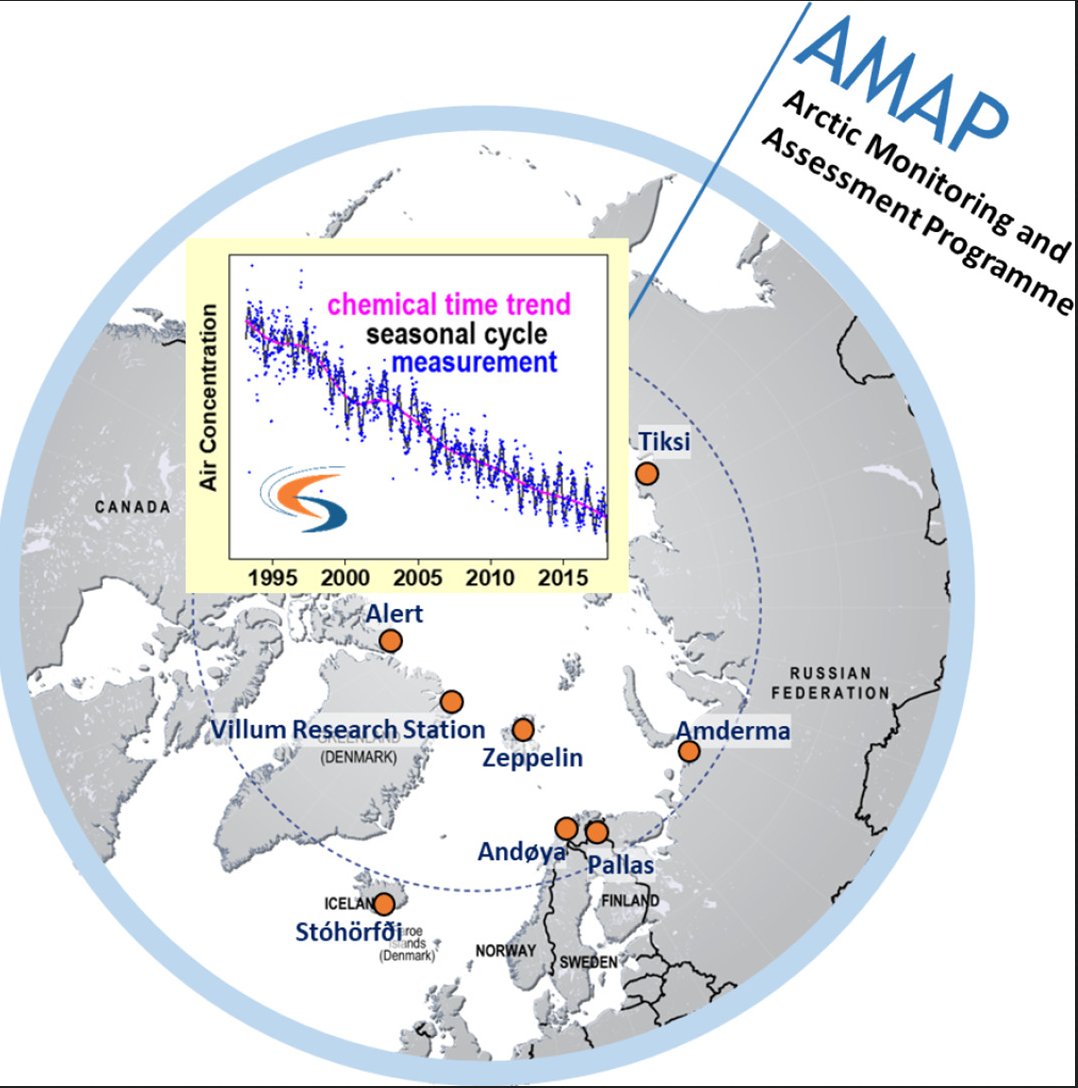Time trends of persistent organic pollutants (POPs) and Chemicals of Emerging Arctic Concern (CEAC) in Arctic air from 25 years of monitoring
New abstract by Fiona Wong, Hayley Hung, Helena Dryfhout-Clark et al.

Abstract:
The long-term time trends of atmospheric pollutants at eight Arctic monitoring stations are reported. The work was conducted under the Arctic Monitoring and Assessment Programme (AMAP) of the Arctic Council. The monitoring stations were: Alert, Canada; Zeppelin, Svalbard; Stórhöfði, Iceland; Pallas, Finland; Andøya, Norway; Villum Research Station, Greenland; Tiksi and Amderma, Russia. Persistent organic pollutants (POPs) such as α- and γ-hexachlorocyclohexane (HCH), polychlorinated biphenyls (PCBs), α-endosulfan, chlordane, dichlorodiphenyltrichloroethane (DDT) and polybrominated diphenyl ethers (PBDEs) showed declining trends in air at all stations. However, hexachlorobenzene (HCB), one of the initial twelve POPs listed in the Stockholm Convention in 2004, showed either increasing or non-changing trends at the stations. Many POPs demonstrated seasonality but the patterns were not consistent among the chemicals and stations. Some chemicals showed winter minimum and summer maximum concentrations at one station but not another, and vice versa. The ratios of chlordane isomers and DDT species showed that they were aged residues. Time trends of perfluorooctanoic acid (PFOA) and perfluorooctane sulfonic acid (PFOS) were showing decreasing concentrations at Alert, Zeppelin and Andøya. The Chemicals of Emerging Arctic Concern (CEAC) were either showing stable or increasing trends. These include methoxychlor, perfluorohexane sulfonic acid (PFHxS), 6:2 fluorotelomer alcohol, and C9-C11 perfluorocarboxylic acids (PFCAs). We have demonstrated the importance of monitoring CEAC before they are being regulated because model calculations to predict their transport mechanisms and fate cannot be made due to the lack of emission inventories. We should maintain long-term monitoring programmes with consistent data quality in order to evaluate the effectiveness of chemical control efforts taken by countries worldwide.
